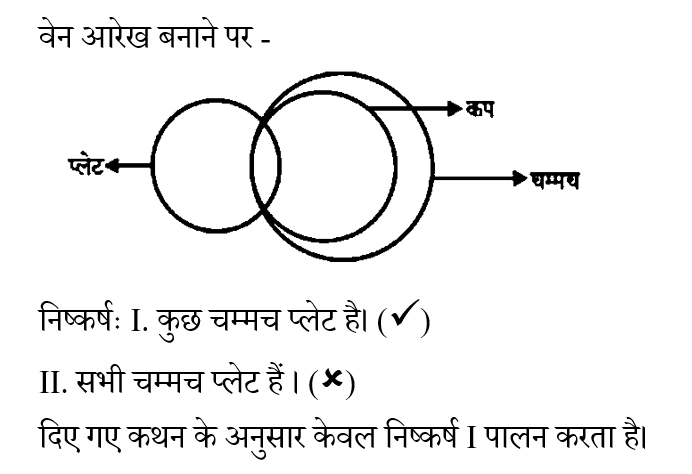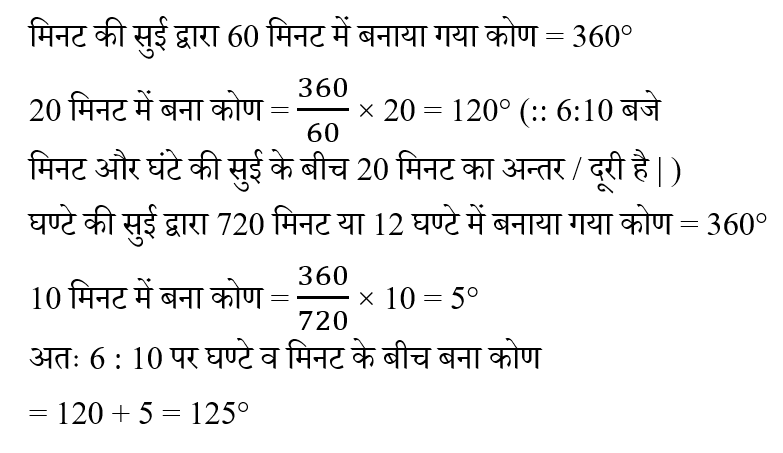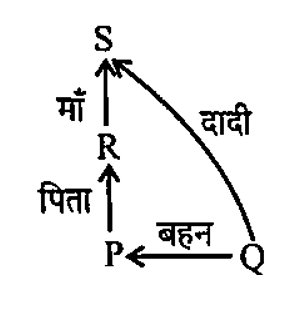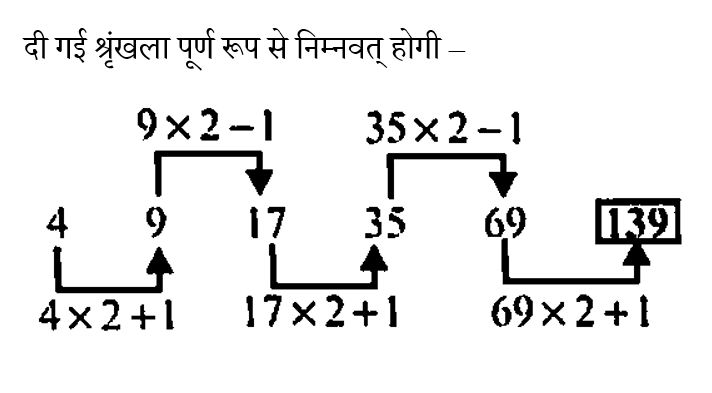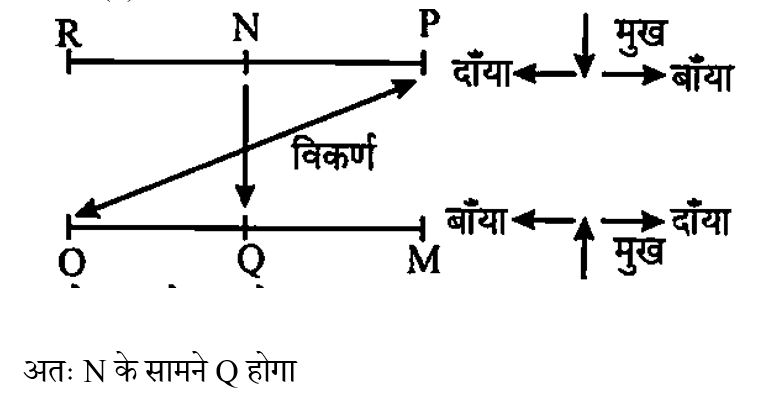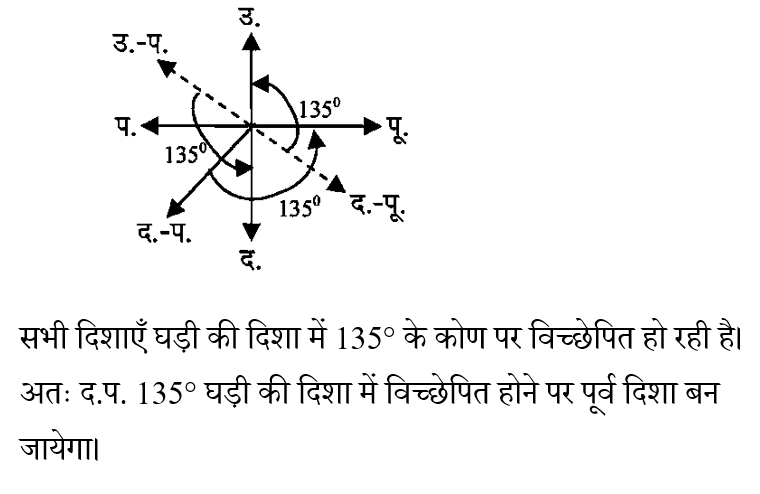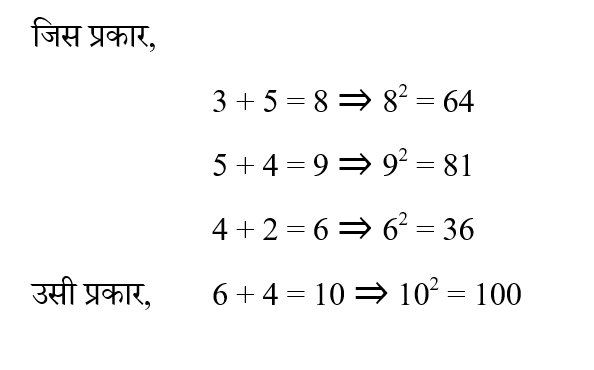Question 1:
Two statements are given followed by two conclusions numbered I and II. Assuming the statements to be true, even if they seem to be at variance with commonly known facts, decide which of the conclusions logically follow(s) from the statements.
नीचे दो कथन और उसके बाद दो निष्कर्ष I और II दिए गए हैं। कथनों को सत्य मानते हुए, भले ही वे सामान्यतः ज्ञात तथ्यों से भिन्न प्रतीत होते हों, निर्णय करें कि कौन से निष्कर्ष कथनों का तार्किक रूप से पालन करते हैं?
Statements: /कथन:
Some plates are cups. / कुछ प्लेट कप हैं ।
All cups are spoon / सभी कप चम्मच हैं।
Conclusions:/निष्कर्षः
I.Some spoons are plates. / कुछ चम्मच प्लेट हैं।
II. All spoons are plates. / सभी चम्मच प्लेट हैं।
Question 2:
Find the angle between the hour hand and the minute hand of a clock at 6 : 10
6 : 10 पर घड़ी की घंटे की सुई और मिनट की सूई के बीच का कोण ज्ञात कीजिए ।
Question 3:
P is the sister of Q; R is the father of P and S is the mother of R. How is S related to Q-
P, Q की बहन है; R, P का पिता है और S, R की माँ है । S, Q से किस प्रकार संबंधित है-
Question 4: 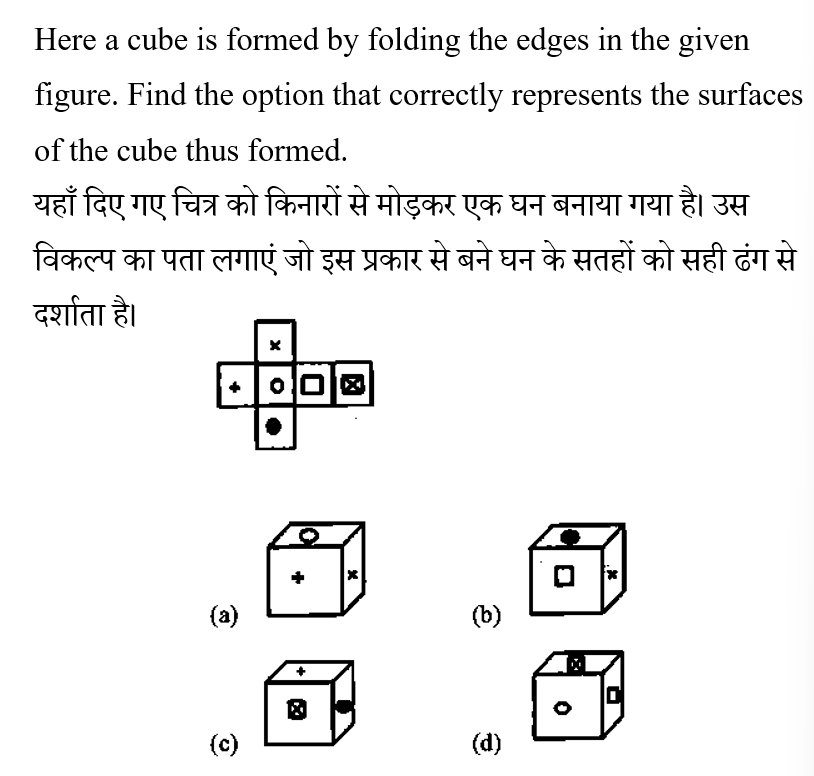
Question 5:
Six friends, Lata, Mala, Neelu, Oli, Parmeet and Kadira are sitting in a circle facing the centre. Each person is sitting exactly opposite to one of the friends. Kadira is neither adjacent to nor opposite to Mala or Parmeet. Parmeet is sitting exactly opposite to Lata. Neelu is sitting to the immediate right of Parmeet. Mala is sitting opposite to Neelu. Oli is sitting to the immediate left of Parmeet. Who is sitting opposite to Oli –
छह मित्र, लता, माला, नीलू, ओली, परमीत और कादिरा एक वृत्त में केंद्र की ओर मुँह किए बैठे है। प्रत्येक व्यक्ति किसी एक मित्र के बिल्कुल सामने बैठा है । कादिरा, माला या परमीत के न तो बगल में है और न ही बिल्कुल सामने बैठी है। परमीत, लता के बिल्कुल सामने बैठा है। नीलू, परमीत के तुरंत दाएं बैठी है। माला, नीलू के सामने बैठी है। ओली, परमीत के तुरंत बाएं बैठा है । ओली के सामने कौन बैठा है -
Question 6:
What is the next number in the following series?
निम्नलिखित श्रृंखला में अगली संख्या कौन सी है ?
4, 9, 17, 35, 69, ?
Question 7:
Six persons M, N, O, P, Q and R are seated in rows, three in each row. Q is not at the end of any row. P is second to the left of R. O is situated diagonally opposite to P in the neighbourhood of Q. N is situated next to R.
छः व्यक्ति M, N, O, P, Q और R पंक्तियों में, प्रत्येक पंक्ति में तीन-तीन करके बैठे हैं। Q किसी भी पंक्ति के अंत में नहीं है। P की स्थिति R के बाई ओर दूसरी है। O की स्थिति Q के पड़ोस में विकर्ण पर P के सामने है। N की स्थिति R के पड़ोस में है।
On the basis of this information, find who is sitting opposite to N?
इस सूचना के आधार पर बताइए कि N के सामने कौन बैठा है?
Question 8:
If South-East becomes North, and North-East becomes West and so on, then what will be South-West?
यदि दक्षिण-पूर्व, उत्तर बन जाता है, और उत्तर - पूर्व, पश्चिम बन जाता है और इसी तरह सभी दिशाएं बदल जाती हैं, तो दक्षिण पश्चिम क्या होगा ?
Question 9: 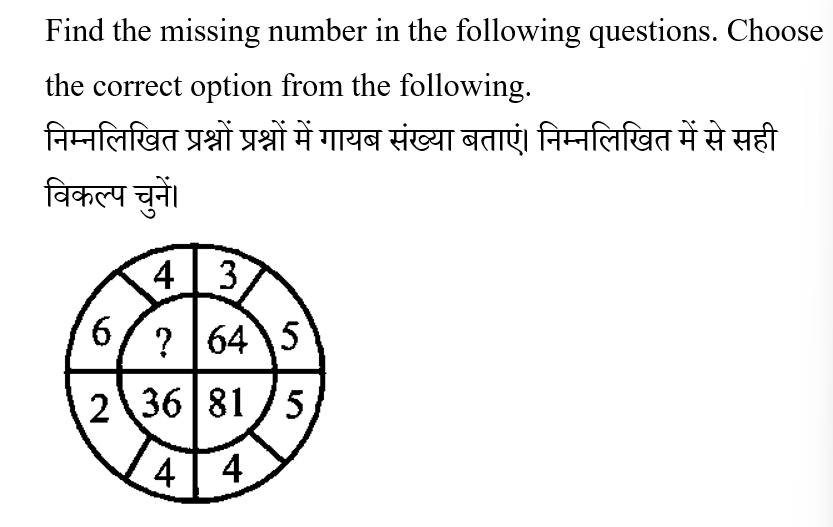
Question 10:
By interchanging which two signs the following equation becomes correct?
किन दो चिन्हों को आपस में बदलने से निम्नलिखित समीकरण सही हो जाता है?
8 × 2 – 6 ÷ 3 + 3 = 11

